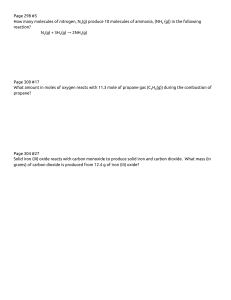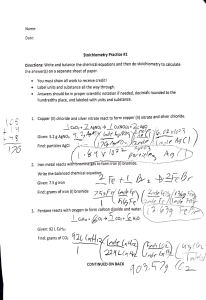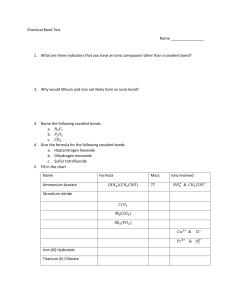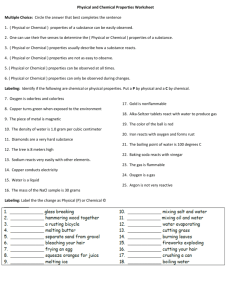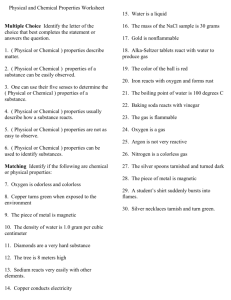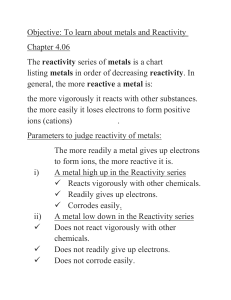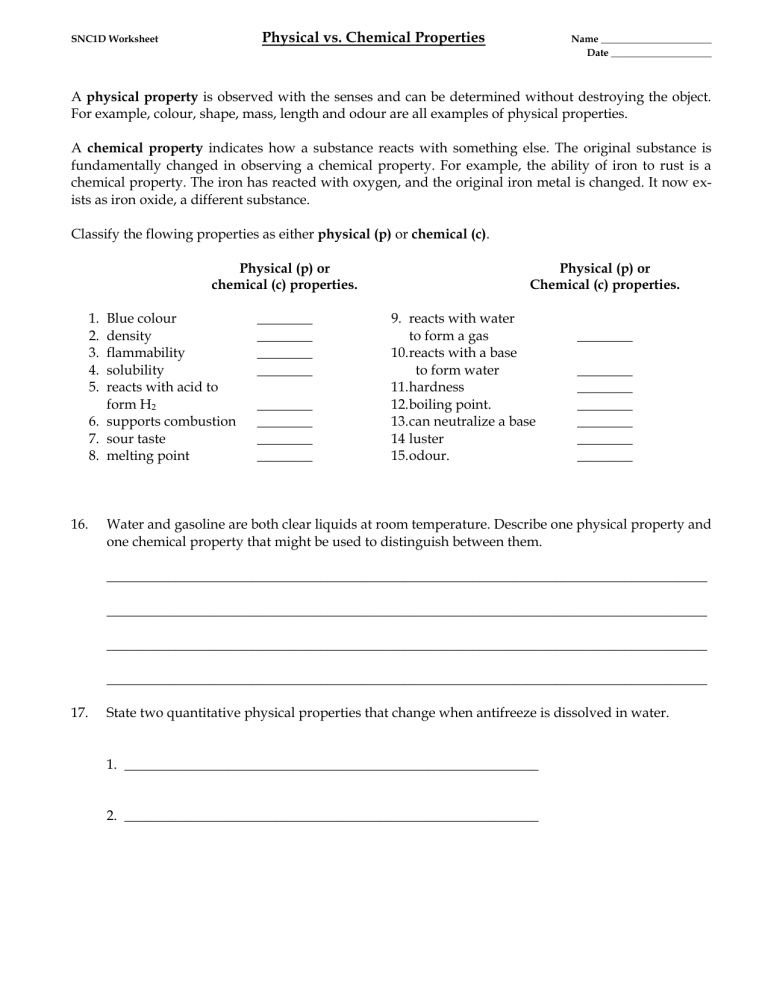
Physical vs. Chemical Properties SNC1D Worksheet Name ______________________ Date ____________________ A physical property is observed with the senses and can be determined without destroying the object. For example, colour, shape, mass, length and odour are all examples of physical properties. A chemical property indicates how a substance reacts with something else. The original substance is fundamentally changed in observing a chemical property. For example, the ability of iron to rust is a chemical property. The iron has reacted with oxygen, and the original iron metal is changed. It now exists as iron oxide, a different substance. Classify the flowing properties as either physical (p) or chemical (c). Physical (p) or chemical (c) properties. 1. 2. 3. 4. 5. Blue colour density flammability solubility reacts with acid to form H2 6. supports combustion 7. sour taste 8. melting point 16. ________ ________ ________ ________ ________ ________ ________ ________ Physical (p) or Chemical (c) properties. 9. reacts with water to form a gas 10. reacts with a base to form water 11. hardness 12. boiling point. 13. can neutralize a base 14 luster 15. odour. ________ ________ ________ ________ ________ ________ ________ Water and gasoline are both clear liquids at room temperature. Describe one physical property and one chemical property that might be used to distinguish between them. _______________________________________________________________________________________ _______________________________________________________________________________________ _______________________________________________________________________________________ _______________________________________________________________________________________ 17. State two quantitative physical properties that change when antifreeze is dissolved in water. 1. ____________________________________________________________ 2. ____________________________________________________________
